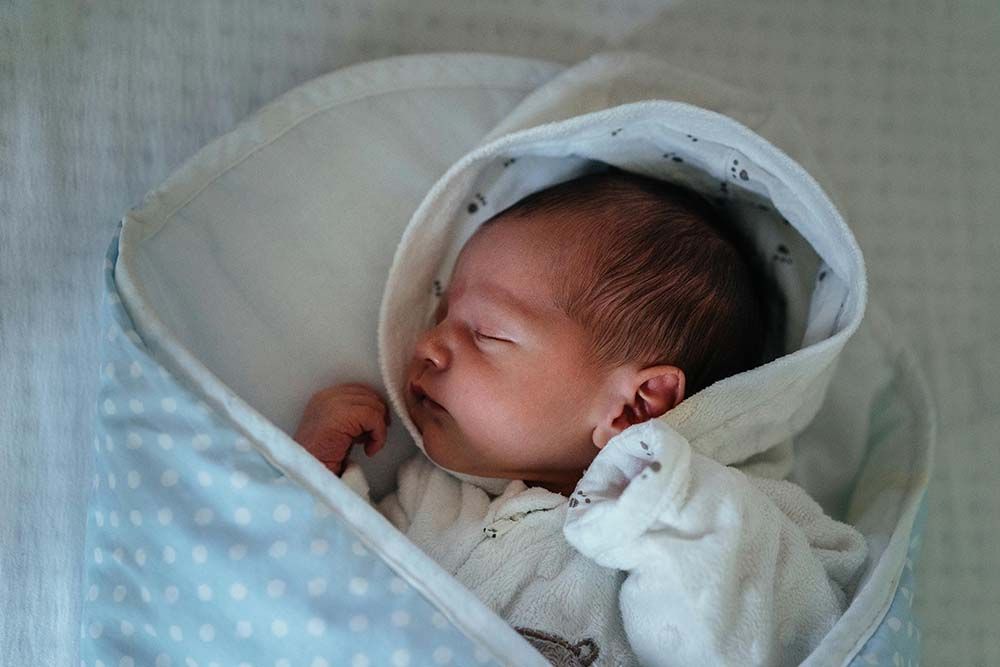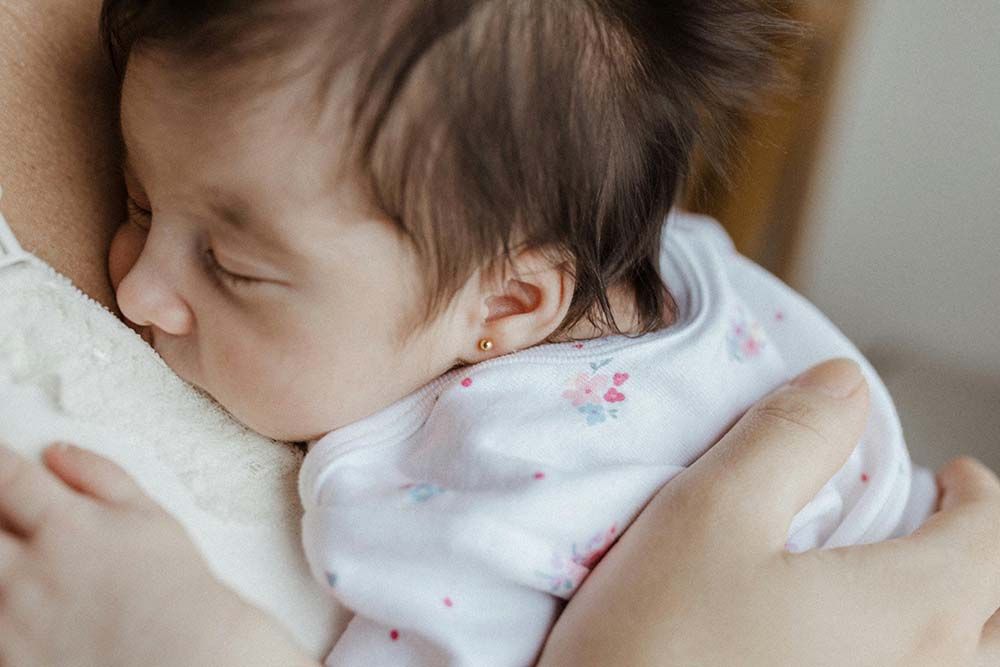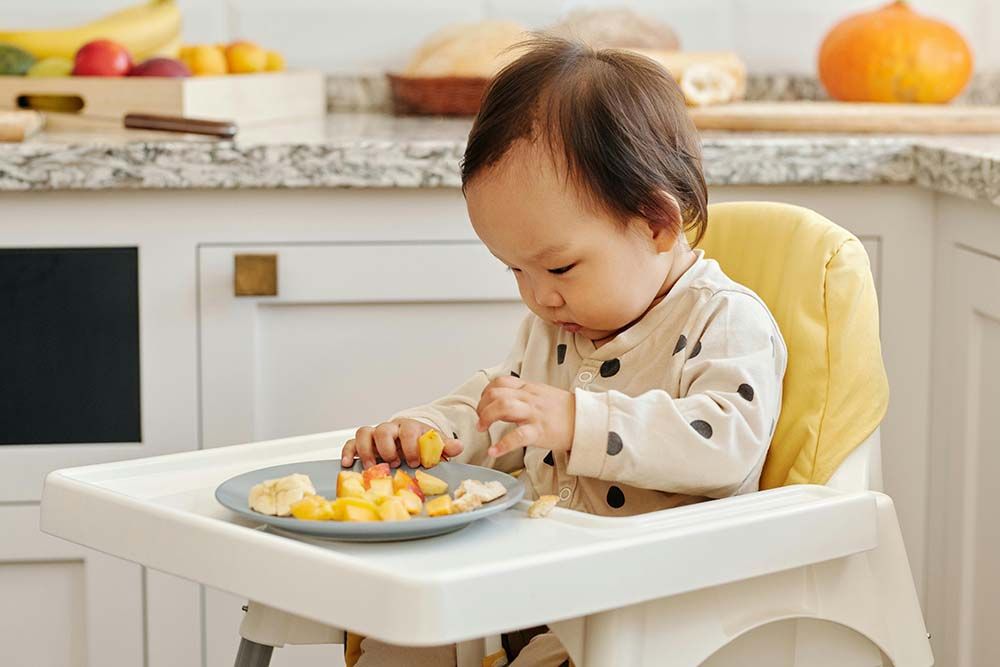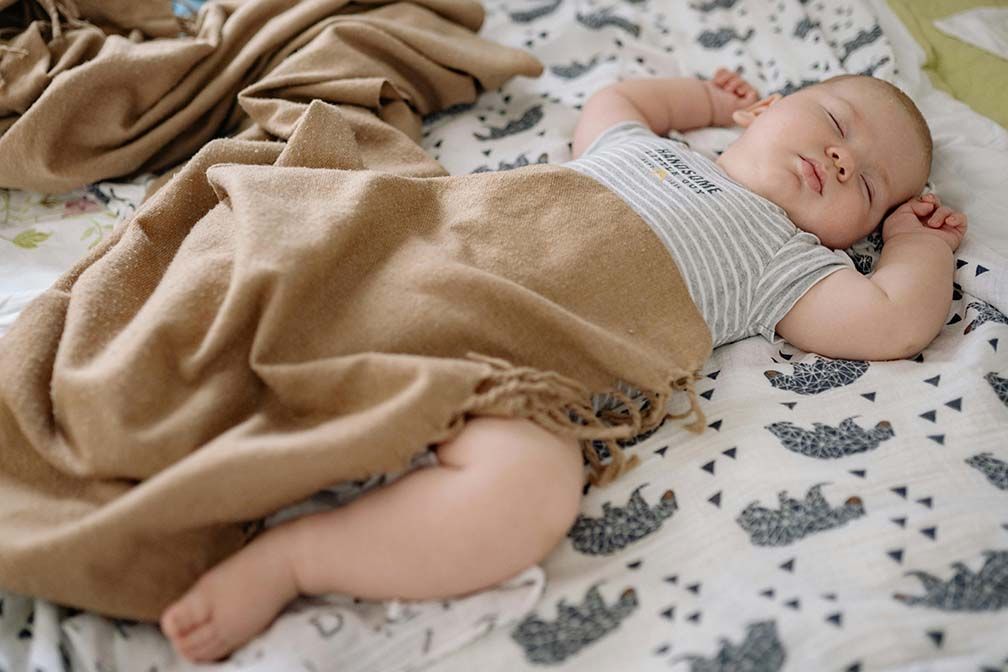

It is normal to swaddle newborns, which intends to make them feel safe and comfortable to better promote good sleep. On the one hand, swaddling clothes can simulate the feeling of a baby being tightly wrapped in the mother's body, bringing them a sense of security and reducing separation anxiety. On the other hand, newborns often have the Moro reflex, which is characterized by sudden limb extension and awakening. Swaddling clothes can help limit this reflex, making it easier for babies to fall asleep and maintain deep sleep. However, babies cannot be wrapped all the time. Welcome to read this post to know when to stop swaddling, how to transition out of swaddle, and more related questions.
IN THIS ARTICLE
Why Should You Stop Swaddling for Your Newborn?
How to Transition Out of Swaddle?
Tips for How to Transition from Swaddle to Sleep Sack
How to See Whether your Newborn has Transitioned out of Swaddle?
How Long Does it Take to Transition out of Swaddle?
What if my Newborn Won’t Sleep Without Swaddle?
When to Stop Swaddling?
Generally speaking, infants can gradually stop using swaddling clothes when they are 2 to 4 months old. But, this is not absolute. Each baby's development speed is different, and some babies may be ready to stop using swaddling clothes at an earlier or later time. Thus, below are listed some signs that indicates it is time to stop swaddling.
1. Baby begins to learn how to turn over: When a baby is able to independently flip from a supine position to a lateral or prone position, the use of swaddling clothes should be stopped. Swaddling clothes may limit a baby's ability to move and increase the risk of suffocation.
2. The baby shows resistance: If the baby appears uneasy, struggling, or crying in swaddling clothes, it may be that they no longer enjoy being restrained. This usually means they are ready to no longer use swaddling clothes.
3. Decreased sleep quality: If a baby's sleep quality in swaddling clothes decreases, such as frequent awakenings or difficulty falling asleep, this may also be a signal to stop using swaddling clothes.
4. The baby's arm movements increase: When babies start frequently waving their arms and exploring their surroundings, swaddling clothes may limit their natural development. This indicates that babies need more freedom to practice hand eye coordination and grasping ability.
Why Need to Stop Swaddling?
1. Promote autonomous movement
As babies grow up, they need more freedom to develop and practice motor skills such as turning, sitting, crawling, and walking. Swaddling clothes can restrict these natural movements and hinder the baby's development.
2. Reduce the risk of suffocation
According to the American Academy of Pediatrics (AAP), it is recommended that babies should stop using swaddling clothes when they are able to turn over on their own to ensure safe sleep, because it may increase the risk of suffocation. If babies roll over to the prone position in swaddling clothes, they may not be able to return to the supine position on their own, which may lead to breathing difficulties.
3. Improve sleep quality
As babies grow up, they begin to learn how to comfort themselves independently, such as sucking their fingers or hugging toys. Swaddling clothes may limit these self comforting behaviors and affect the quality of the baby's sleep. Also, gradually getting rid of swaddling clothes can help babies adapt to different sleeping environments and conditions, which can reduce dependence and improve sleep flexibility.
4. Avoid excessive dependence
Long term use of swaddling clothes may lead to excessive dependence in babies, making it difficult for them to fall asleep without swaddling clothes. Gradually getting rid of swaddling clothes can help babies learn to fall asleep under different conditions.
How to Transition Out of Swaddle?
Method 1. Gradually reduce the frequency of use
Stop using swaddling clothes during the day: First, stop using swaddling clothes during the day to allow the baby to adapt to the feeling without swaddling clothes when awake and active.
Gradual reduction at night: At night, you can try to reduce the time spent using swaddling clothes once a night. For example, the first night of swaddling until midnight, and the second night of swaddling until the last milk before bedtime, gradually reducing the usage time.
Method 2. Partial packages
Single arm freedom: At the beginning, you can wrap only one arm of the baby, allowing the other arm to move freely. This can help the baby gradually adapt to the feeling of incomplete wrapping.
Free arms: Next, you can try not wrapping the baby's arms at all, but still gently covering the baby's body with swaddling clothes to provide a certain sense of restraint.
Method 3. Use sleeping sacks
Transitioning to a sleeping sack: A sleeping sack is a great transitional tool that provides some warmth and restraint, but it does not restrict the baby's movement like swaddling clothes. Choose a suitable sleeping bag that is neither too tight nor too loose.
Choose the appropriate style: There are various styles of sleeping sacks on the market, including those with sleeves and those without sleeves. You can choose the appropriate style according to your baby's preferences and weather.
Tips for How to Transition from Swaddle to Sleep Sack
1. Establish a fixed bedtime routine
Ensure a quiet and comfortable sleeping environment for babies, with moderate temperature, which helps them fall asleep better. At the same time, parents can establish a fixed bedtime routine, such as bathing, storytelling, or gentle massage, to help the baby relax and prepare for sleep.
2. Observe the baby's reaction
Closely observe the baby's sleep quality to see if they can adapt to sleep without swaddling clothes. If the baby shows discomfort or wakes up frequently, the transition speed can be adjusted appropriately. If necessary, you can try gently tapping or shaking to help them fall asleep.
3. Provide a sense of security
Parents can maintain close companionship as babies adapt to new sleep patterns, giving them extra comfort and a sense of security. What’s more, you can provide some soothing items to help babies feel at ease, such as plush toys or pacifiers.
4. Patience and perseverance
Each baby's adaptation speed is different, some babies may quickly adapt to sleep without swaddling clothes, while others may take longer. Thus, parents ought to maintain patience and do not rush for success. But parents should flexibly adjust the transition plan according to the specific situation of the baby to find the most suitable method for them.
5. Ensure safety
Ensure that there are no extra items in the baby's sleeping environment, such as plush toys, pillows, or heavy blankets, to reduce the risk of suffocation. It is also important for parents to keep their babies in a correct sleeping position, allowing babies to sleep on their back can effectively reduce the risk of sudden infant death syndrome (SIDS).
How to See Whether your Newborn has Transitioned out of Swaddle?
After getting rid of the swaddle, babies may have some changes, for example:
- Enhanced activity ability: Babies will become more flexible, able to freely flip, stretch, and move, which helps them develop muscle strength and coordination skills.
- Sleep pattern changes: Some babies may sleep better without restraint, but they may also wake up frequently and need time to adapt to the new environment.
- Improved self soothing ability: Babies may learn to use their fingers, soothing objects, or gently shake themselves to comfort themselves and develop the ability to fall asleep independently.
- Increased curiosity about the environment: Without the constraints of swaddling clothes, babies are more likely to observe their surroundings, promoting cognitive development.
- Emotional changes: Some babies may show anxiety or irritability during the adaptation process, while some may feel more comfortable and at ease.
- Sleeping posture changes: After leaving the swaddling clothes, babies may try different sleeping postures to help them find the most comfortable position.
Each baby's adaptation situation is different, and parents can patiently observe and provide necessary support and comfort. If you have noticed these changes, it indicates that the baby may have adapted to sleeping without swaddling clothes.
How Long to Transition out of Swaddle?
The time required for a newborn to detach from swaddling clothes varies depending on individual differences. Generally speaking, most babies need several days to weeks to adapt to a sleep mode without swaddling clothes, during which the usage time can gradually be reduced. However, some babies may fully adapt within one to two weeks, while others may take longer, even several weeks to a month.
An example of the best transition swaddle schedule
1. Preliminary observation (1-2 days)
Stop using swaddling clothes during the day and observe the baby's reaction. If the baby performs well, they can proceed to the next step.
Nighttime partial wrapping: At night, you can try wrapping only one arm of the baby, allowing the other arm to move freely.
2. Gradually reduce (1-2 weeks)
Gradually reduce the use of swaddle at night. For example, reducing usage time by 1-2 hours per night in the first week and continuing to reduce it in the second week.
Using a sleeping bag: Introduce a sleeping bag as a transitional tool to ensure that the baby feels warm and comfortable.
3. Complete cessation (1-2 weeks)
Completely not wrapped: After the baby adapts to partial wrapping, you can try not wrapping at all and observe the baby's reaction.
Provide comfort: Provide additional comfort and support when the baby adapts to a new sleep pattern, such as tapping lightly, whispering softly, or using soothing objects
Each baby's adaptation speed is different, and parents should be patient. The key is to observe the baby's reaction and adjust the transition process according to their needs, ensuring that they feel safe and comfortable when adapting to the new way. If you have any doubts, it is recommended to consult a pediatrician.
What if my Newborn Won’t Sleep Without Swaddle?
If the newborn has been relying on swaddling clothes to fall asleep and cannot change this situation after various attempts, accompanied by abnormal conditions such as continuous crying, loss of appetite, and weight loss, it is recommended to consult a doctor's opinion. Doctors can rule out potential health problems in newborns through checking, such as gastrointestinal and neurological issues, and provide professional advice.























